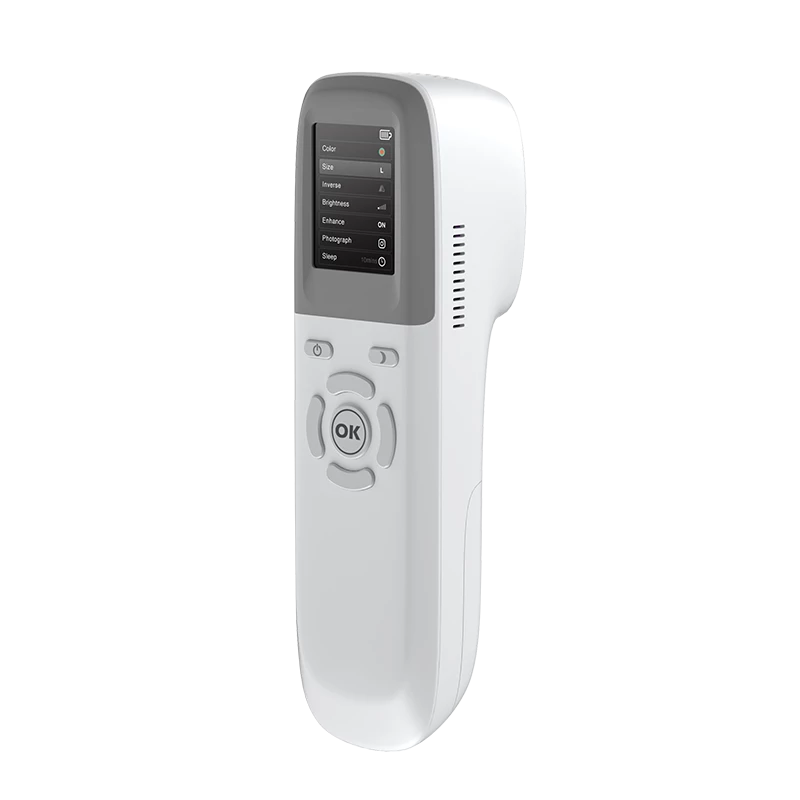在医疗操作中,快速准确地定位患者的静脉对于许多操作(例如静脉注射和抽血)的成功至关重要。然而,静脉定位通常具有挑战性,尤其是对于肥胖、肤色较深、体毛过多的患者,以及儿童和婴儿等特殊人群。提高静脉穿刺的成功率,减少误穿刺,并最大限度地减少患者的不适已成为医疗领域的重要课题。
为什么寻找静脉如此困难?
寻找静脉 在医疗操作中,静脉穿刺被认为是一项颇具挑战性的任务。虽然静脉通常位于皮肤表面附近,且易于触及,但各种因素使得静脉的定位和穿刺并非易事。
皮肤和脂肪层的厚度
肥胖患者:肥胖者的皮下脂肪层较厚,导致静脉更深且可能被遮挡,因此难以通过视觉或触觉方法找到静脉。
老年患者:随着年龄增长,皮肤失去弹性,皮下脂肪分布发生变化,导致静脉隐藏得更深。老年人的静脉也变得更加脆弱,难以定位或触摸。
静脉深度和大小的差异
静脉的深度和大小差异很大。有些静脉非常浅,几乎就在皮下;而有些静脉则更深,周围组织致密,穿刺更加困难。尤其是在手臂、手、脚踝和脚部,静脉深度可能有所不同,这意味着有些静脉比其他静脉更容易触诊,而有些静脉则可能用传统方法根本无法检测到。
静脉走向和分布
受个体解剖结构的影响,静脉的走向和分布在个体之间差异很大。有些人的静脉清晰可见,笔直,而另一些人的静脉则可能弯曲或分支,这使得识别更加困难。在某些生理条件下,静脉可能会“隐藏”或收缩,例如在寒冷天气或高压环境下,这使得静脉更难定位。
血管状况
血管壁的弹性:随着年龄的增长或由于糖尿病或静脉曲张等某些疾病,静脉可能会失去弹性并变得更硬,从而使其变得更脆弱且更难定位。
静脉炎或血栓形成:当静脉受损或发炎(例如静脉炎、深静脉血栓形成)时,它们可能会变硬或阻塞,导致健康静脉难以找到或在穿刺过程中容易出现并发症。
肤色和质地的差异
肤色:肤色较深的人,静脉可能不如肤色较白的人明显。正常情况下,深色皮肤反射的光线较少,因此静脉更难被发现。此外,传统的显像方法(例如使用透明胶带或目视观察)可能无法有效显露静脉。
皮肤纹理:毛发、纹理、疤痕或其他皮肤特征可能会影响静脉的位置。较厚的皮肤或毛发可能会遮挡静脉,影响观察或触诊静脉的能力。
患者体位的影响
患者的体位会显著影响静脉的可见性。例如,当患者直立或俯卧时,静脉的充盈度和方向会发生变化。在坐姿或站姿下,血液倾向于流向下肢的静脉,使其更加明显。而当患者躺下时,尤其是在患者体质虚弱的情况下,静脉充盈度可能不足,导致静脉定位更加困难。
水合和血流状况
适当的补水可以确保血液循环顺畅,使静脉更加明显。然而,在脱水状态下,血流会受损,导致静脉看起来不那么充盈或更无力。同样,运动后,血液循环更加活跃,会使静脉暂时更加明显。休克或低血压等病理状况可能会导致血流缓慢,导致静脉变小,难以触诊。
静脉弹性和张力
静脉的弹性和张力也会影响其可见性。有时,静脉可能会因局部肌肉紧张或全身变化(例如寒冷导致血管收缩)而收缩,使静脉更难被看到。另一方面,静脉可能会过度扩张和松弛,使其变得不稳定,在穿刺过程中有破裂或移位的风险。
患者的心理因素
有些患者可能会对静脉穿刺感到紧张或焦虑,导致血管收缩或手臂肌肉收紧。这种心理反应会使原本容易找到的静脉变得不那么明显。
医生或护士的经验
医护人员的技能水平和经验对静脉穿刺的成功也至关重要。对于初学者来说,定位静脉可能更加困难,尤其是在复杂病例中。经验丰富的医生或护士可以通过触诊技巧、判断静脉搏动和评估血流来快速识别静脉,从而降低误穿刺的可能性。
如何快速定位静脉?
为了提高静脉穿刺的准确性和效率,静脉显像仪的使用日益普及。该设备利用红外技术投射皮下静脉的图像,使医生和护士能够实时观察静脉的位置和路径。这显著提高了穿刺的成功率,并减轻了患者的不适感。
静脉显像仪的优点:
提高成功率: 通过清晰显示静脉的路径和深度,可以降低误穿刺的可能性。
缩短手术时间: 医疗保健提供者可以快速识别静脉,避免多次尝试。
减少患者不适: 更少的尝试和更少的痛苦可以为患者带来更好的体验。
提高运营效率: 在复杂情况下特别有用,例如肥胖患者、皮肤黝黑的患者或体毛过多的患者。
静脉查找器如何工作?
静脉显像仪使用红外或近红外技术扫描皮下区域。静脉反射不同波长的光,从而生成静脉图像。该图像可帮助医护人员在手术过程中准确定位静脉,确保精准穿刺。
静脉查找技术的共同特点:
彩色显示: 静脉显像仪提供多种颜色模式,帮助医生在各种肤色或光照条件下清晰地观察静脉。选择合适的颜色模式,更易于查看静脉。
深度显示: 一些先进的设备提供有关静脉深度的信息,帮助医生确定其实际深度并避免错误。
亮度调节: 许多设备允许多级亮度调节,确保静脉图像在不同的光照条件下清晰。
自动化功能: 这些包括消除毛发干扰的软件、使深层静脉更清晰的增强模式以及根据用户喜好自动调整。
静脉显像器的应用:
对于肥胖患者、儿童以及需要精准静脉穿刺的患者来说,静脉显像仪可以带来巨大的改变。它们在以下情况下尤其有用:
肥胖患者:对于脂肪层较厚的患者,静脉往往被隐藏,但静脉显像器可以清晰地显示深静脉。
皮肤黝黑的患者:静脉查找器可帮助定位较深肤色中较难看到的静脉。
儿童和新生儿:儿童和婴儿的静脉较细且较深。静脉显像器有助于防止误穿刺,减少对儿童的伤害。
静脉曲张患者:静脉查找器有助于避免静脉阻塞或分支,降低并发症的风险。
如何选择合适的静脉查找器?
选择静脉显像仪时,务必选择适合患者需求和医疗环境的设备。以下是两款功能强大的静脉显像仪型号,可帮助医护人员更高效地进行穿刺:
十二种色彩模式:适应各种肤色和环境光线,确保静脉图像清晰。
三种尺寸:适用于成人、儿童和新生儿,满足不同类型患者的需求。
六级亮度调节:根据环境光照条件调节静脉图像亮度。
去除毛发干扰:减少毛发干扰,提供精确的静脉图像。
深度显示:用五种混合颜色显示静脉深度,以帮助精确地进行穿刺定位。
增强模式:增强难以发现的静脉的深静脉可见性。
睡眠模式:不使用时降低功耗,延长电池寿命。


十二种色彩模式:适应不同的肤色和环境。
三种尺寸:适合各个年龄段。
六级亮度调节:自定义亮度以获得最佳视觉清晰度。
增强模式:提高小静脉或深静脉的清晰度,以便进行精确操作。
睡眠模式:低功耗模式,节省电池并允许快速恢复。
翻转模式:根据用户喜好调整显示,使操作更加方便。
总而言之,静脉显像仪不仅能帮助医生快速定位静脉,提高穿刺成功率,还能减轻患者的不适感,缩短手术时间。无论成人、儿童还是特殊病例,静脉显像仪都能提供精确的静脉成像,使医护人员能够在繁忙的临床环境中快速做出准确的决策。


